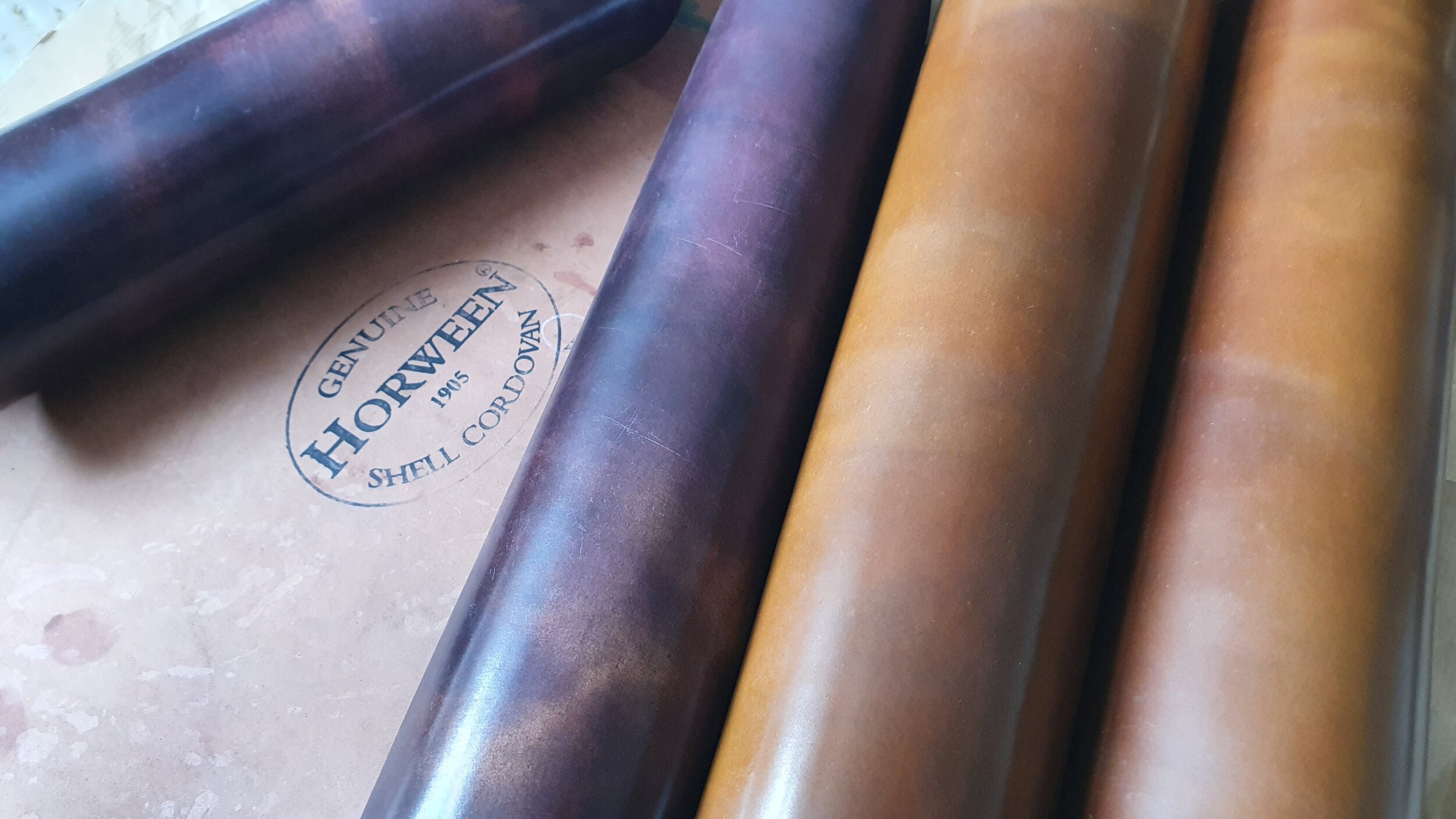Shell Cordovan
Shell Cordovan is generally considered to be the pinnacle of stropping leather, and the renowned Horween Leather Company in Chicago, USA, have been producing Shell Cordovan for over a century. Theirs is the benchmark amongst the few tanneries world wide that produce this fine leather.
Two 'shells' are obtained from a single horse hide. These oval shaped areas are taken from the upper buttock area of the hide. Once the 'butt' area of the hide has been separated, it is tanned in a lengthy process during which it is steeped in natural vegetable liquors. Due to the dense fibrous membrane that makes up the 'shell' area, it takes over 6 months for this tanning process to slowly penetrate the vegetable liquors evenly throughout the entirety of the hide.
The hide is then hot stuffed with Horween's proprietary mix of natural ingredients, before being dried flat on glass. Once these processes are complete, the hide is shaved by highly skilled craftsmen to remove the outer layers of skin, revealing the dense fibrous membrane underneath. Then the oval shaped 'shell' area is cut away from the immediate area of the hide. Finally the shells are finished with hand applied dyes, before being hand glazed and richly polished to the phenomenal standard that give this famous material its well deserved reputation as the finest of specialist leathers.
As a stropping leather, Shell Cordovan has a very light draw, but the leather has unique qualities in that it appears to almost suck the bevel of the razor onto its surface during the stropping action, almost akin to a magnetic effect. This quality becomes more pronounced and noticeable after two or three months of use.
Truly a wonderful stropping surface!
Latigo
Another Horween product, Latigo is a vegetable re-tanned cow hide, with a fine grain.
Traditionally known as a leather with an oily appearance and characteristics (and a heavy draw), the Horween Latigo of recent years has become a superbly refined material, yet one which retains all the excellent qualities that this fine leather is known for.
The surface is smooth, with a noticeably fine grain. The draw is surprisingly smooth, and would be described as medium-light. It can of course be increased to taste by adding Neatsfoot Oil to the rear of the material, but in its natural state this is such a fine leather that it almost begs to be left alone
Horween Latigo is wonderfully supple, yet hardy and durable. It is truly a leather that will last, and in terms of a stropping leather, it will keep giving the same superb results year after year.
Kangaroo
Kangaroo leather is unique in its structure, and due to its extremely high tensile strength, is most often supplied as a very thin material. The strength exhibited by this leather, derives from the Kangaroo’s skin having a very individual combination of genetic features. It has around 10 times the strength of cowhide.
Because Kangaroos are not farmed for their skin, and due to their natural habitat being filled with thorny bushes and barbed wire fences, and also their agonistic behaviour (particularly amongst males), the hide can occasionally have marks or uneven colouring– though nothing that would be detrimental to a razor.
As a stropping leather, it has a mild draw, and excellent feedback.
GUEST LEATHERS
Periodically I use various choice leathers that interest me, and I deem worthy of utilising in new strops. Examples are Spanish horse hide, Horween heavy horse front, Badalassi Carlo Nofin, and others. There will be more guest leathers in the future of course, though not necessarily those that I have already used! But you can be assured that they will be high quality, and offer the opportunity to own a strop from a more limited run that the more regular leathers.

